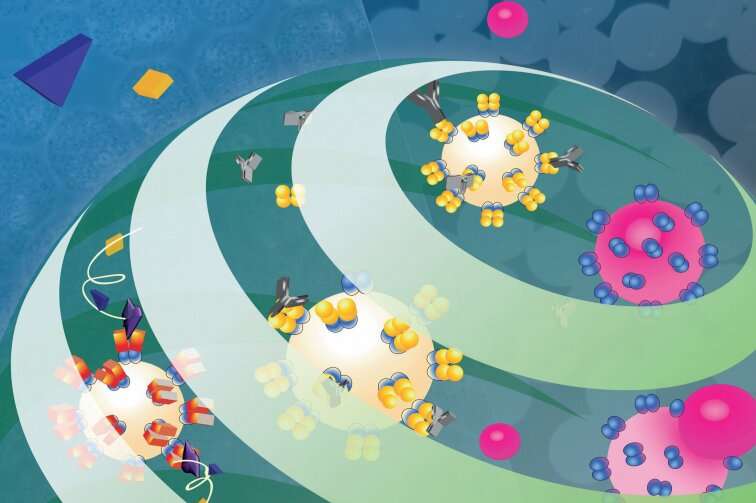New smart materials to tackle global challenges

Understanding how natural materials are created has helped a Griffith University research team create a smart material platform to aid in the creation of new drugs and even help in the clean-up of polluted environments.
Professor Bernd Rehm, a principal research leader within the Griffith Research Institute for Drug Discovery and Director of the Centre for Cell Factories and Biopolymers, worked with post-graduate Kampachiro Ogura on the development of bioengineered particles that could be adapted to a variety of environmental, industrial and medical applications.
The findings have been published in high impact journal Advanced Functional Materials.
Professor Rehm said the team looked to nature to provide insights into the natural building blocks and materials to create smart materials that could be applied with a novel functionality and be adapted to suit different purposes.
The smart materials could be used to neutralize toxic pollutants in the environment, as medical treatments that could be injected into the human body or an animal, and as a tool to help in the manufacture of new medicines.
"We started from basic science by trying to understand how those materials are made naturally, and if you understand the mechanisms you can then go back into nature and do bioengineering and rewire the bacteria to recombine things a little bit differently towards possible applications," Professor Rehm said.
Bacteria were rewired to produce protein-coated bioplastic beads, which the scientists subsequently encapsulated into alginate hydrogels.
Proteins coating the bioplastic beads remained functional, while the bioplastic beads could be loaded with water-insoluble substances that represented active molecules, such as medicinal drugs.
The alginate gel properties the bioplastic beads were encapsulated within changed in response to salt and acidity, and could be controlled to enhance functionality of the bioplastic beads for the production of biopharmaceuticals or the clean-up of polluted environments.
"This development of a new materials platform technology combines naturally occurring biopolymers in a very new way to create functionality that has been not achieved before," Professor Rehm said.
"It's the first proof of concept; it's a platform technology that can be now easily adapted to a variety of environmental, industrial and medical applications."
The natural smart material degrades over time, so it would not pollute the environment with more manufactured materials. While active, it would provide intense activity to reduce the pollutant burden.
The material—bioengineered polyhydroxybutyrate (PHB) particles encapsulated within tunable alginate hydrogels—is nano-/micro-structured, but it could be produced on a large scale.
Professor Rehm said the next step would be for the team to provide a specially functionized material for an end user—such as an organization, the government or industry partner—to meet an unmet need.
The paper "Alginate Encapsulation of Bioengineered Protein-Coated Polyhydroxybutyrate Particles: A New Platform for Multifunctional Composite Materials," has been published in Advanced Functional Materials.
More information: Ping Wang et al. Experimental Evidence of Large Bandgap Energy in Atomically Thin AlN, Advanced Functional Materials (2019). DOI: 10.1002/adfm.201902608
Journal information: Advanced Functional Materials
Provided by Griffith University



















